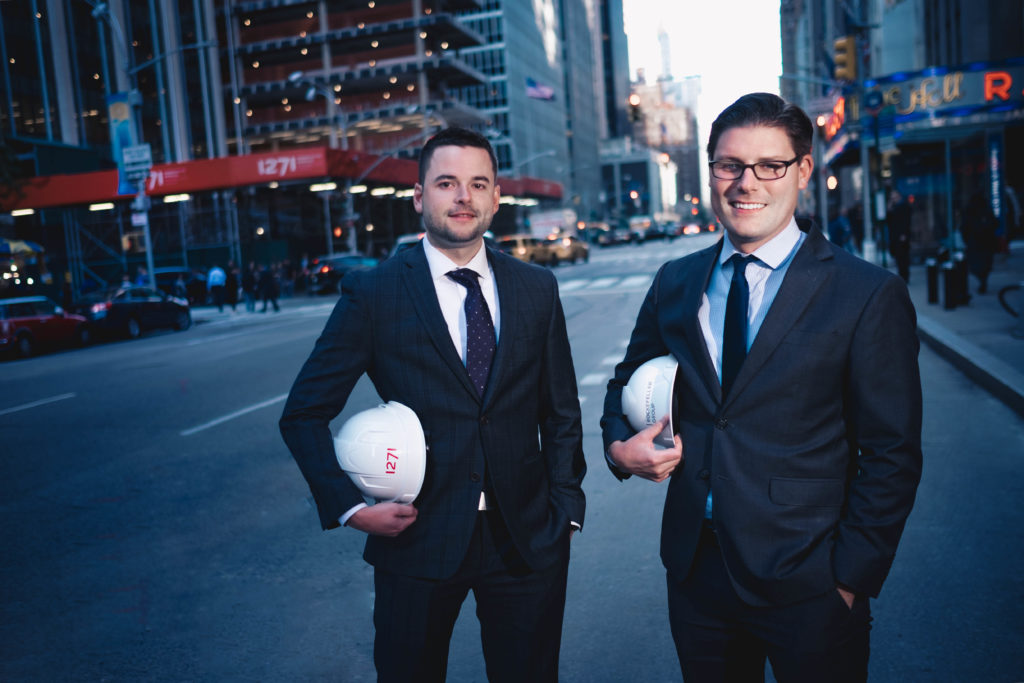Preserving History
In 1958, Marilyn Monroe wore a white dress reminiscent of her iconic role in The Seven Year Itch to the groundbreaking ceremony for the new Time & Life building. She smiled for photographers and lit a large firecracker as part of the ribbon-cutting celebration of what would become one of the finest examples of workplace architecture ever seen. The Time & Life building at 1271 Avenue of the Americas was and remains an inspiration of style, the epitome of mid-century modern aesthetic. As the home of publications that informed culture and shaped history, the revitalization efforts currently underway intend to honor the building’s legacy. Fifty-nine years later, Rockefeller Group Project Manager Michael Tate and Vice President of Design and Construction Daniel Bower are spearheading a revitalization of the iconic property to uphold 1271’s celebrated spot on Sixth Avenue, midway between Bryant and Central Parks in Rockefeller Center.
Time Marches On
The overall preservation of 1271’s rich history, and its evolution as a modern workplace environment, are the driving forces behind its repositioning efforts, which employ 150 workers on-site each day. Each new finish being installed has been painstakingly selected to match the remaining originals, and the valuable works of art “Portals” by Josef Albers, and Fritz Glarner’s “Relational Painting No. 88” – mainstays since the building’s inception – will be conserved. The famed terrazzo floor is to be refurbished, and the cabernet-colored glass ceiling panels are being replaced in-kind, featuring new LED lighting. According to Tate, the new lobby will be almost identical to the original, but more open, lighter and fresher. Larger windows are currently being installed, and in the next few weeks renewal of the floor will be underway. The openness can be attributed to the windows, but also to the removal of two retail spaces, which protruded into the south side of the lobby, breaking up the view. Turnstiles have been brought to the elevators, which will service multiple tenants. From traditionalists to creative-types, 1271’s modern face-lift will appeal to a wide variety of new tenants, including Mizuho Bank and Major League Baseball, who are expected to move in 2019. According to Bower, the timeline has progressed seamlessly, meeting milestone dates with an amazing product taking shape.

Visualizing The Future
Apart from the problem-solving that comes with the overhaul of an older building, updating 1271’s plaza has also been a challenge. The building has always bucked conformity with its celebrated Copacabana terrazzo pavement, inspired by the iconic Burle Marx-designed sidewalks of Copacabana Beach in Rio de Janeiro; the newly updated plaza, which will imitate the existing classic, is already 90 percent poured on the south and 70 percent complete on the east side. Tate and the team have utilized an innovative paving process unique to this project, which enhances concrete by grinding it down to expose the marble aggregate, emulating terrazzo. Due to the rare use of marble, the Bossa Nova-inspired design – grated and three-dimensional in comparison to straight-edge plazas – poses a unique challenge. In addition to the pour, new canopies are being added to the east side of the building. Bower adds that a larger canopy to the east will tie everything together from a design perspective. Landscape architect Ken Smith is overseeing the installation of a large, central fountain and five smaller fountains, accented with planting areas. These new features will be located on the property line next to the sidewalk, enriching the public space.
Loving the Avenue
The renovations at 1271 align with the recent changes on Sixth Avenue, inviting tenants of all types to join the dynamic atmosphere of the submarket. In addition to the property’s contribution to the energizing vibrancy on Avenue of the Americas, Bower and Tate note the importance of building upon and continuing a legacy, restoring the property to its former splendor, and honoring an institution by retaining the building’s original architecture. Since long-time former tenant Time Inc. occupied more than 90 percent of the building before its 2015 relocation, prospective tenants will enjoy their first opportunity in more than 50 years to lease what is virtually new construction space at this prime location.
“There has been a lot of focus on this project at all levels, and it has made the experience very collaborative and one that we feel will result in the best possible product,” Tate explains. “Not every firm has [Rockefeller Group’s] cooperative nature, and we’ve created a real workplace culture on the project with Bill Edwards’ leadership. He is an asset manager but has also become the developer, driving that collaboration and progress forward.”
Bower adds, “These are massive renovations to an old, existing building, so we expect nothing to go smoothly. But because there are amazing, talented people working on this job, we are bringing a 50-year-old asset back to its glory days. It does not get better than that. It is exciting to make it something special again.”
Signup
Stay up to date with the latest Rockefeller Group news.

